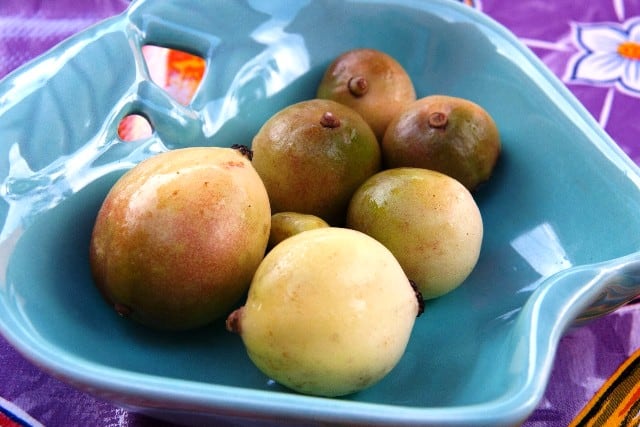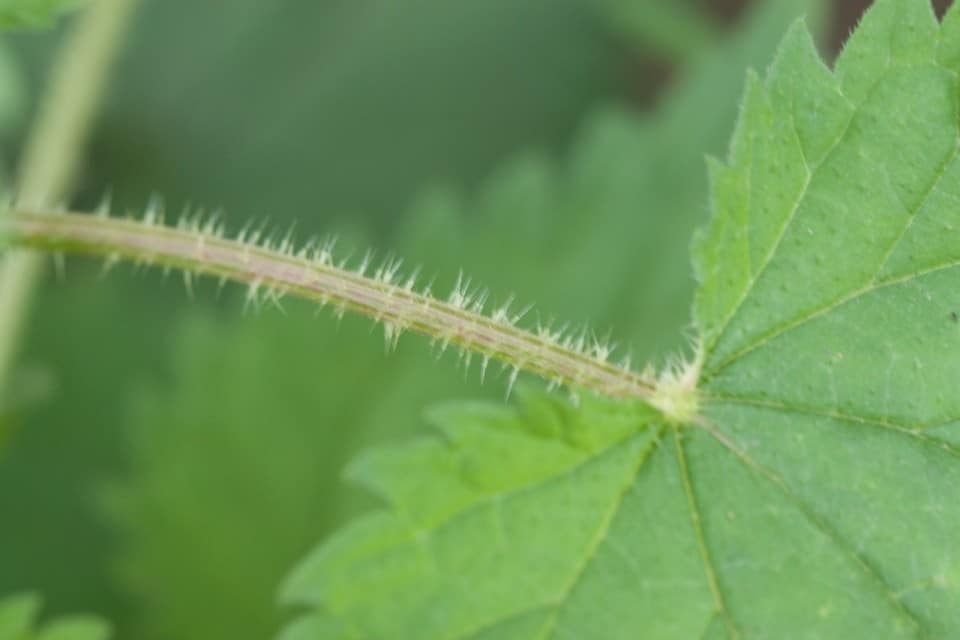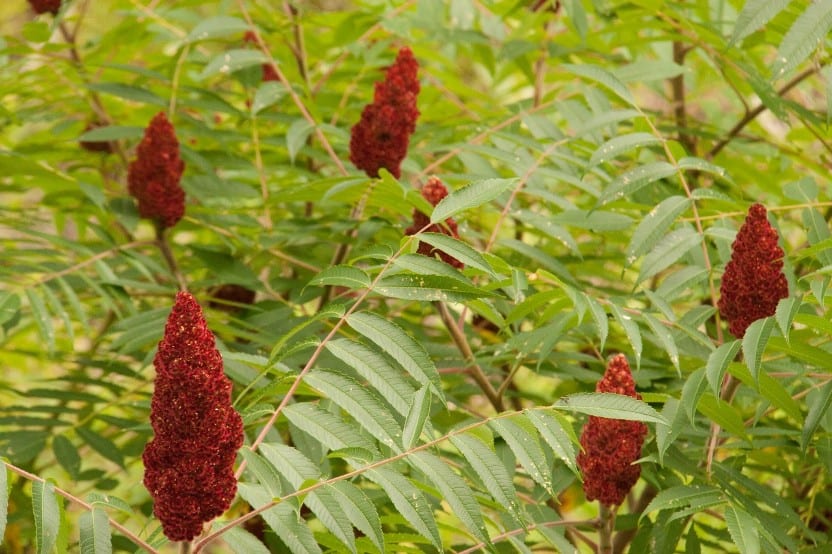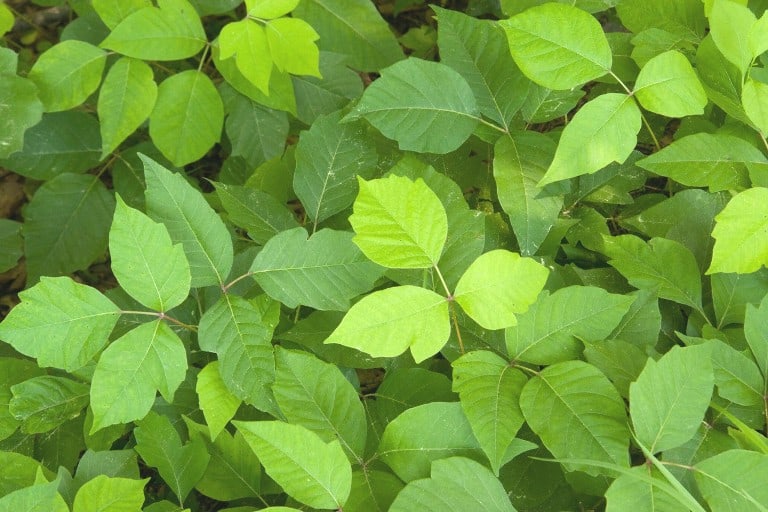
No one is born an expert—in foraging for wild foods or anything else. We learn by doing, and along the way we make mistakes.
As a forager, I’ve struggled to find that essential balance between adventurousness (Hey, I’m eating wild food that I just picked myself, that’s adventurous!) and caution (Hey, I’m eating wild food, I’d better be careful! ). The first, and absolutely essential rule of “The Forager’s Creed” is never put anything in your mouth if you’re not 100% sure what it is. Actually, that’s good advice for life in general.
Here are five more life lessons I’ve learned from foraging for wild foods. May you save yourself some time and trouble by learning from my mistakes.
Foraging for Wild Foods Lesson #1: Don’t procrastinate
I discovered a giant patch of mayapples one August afternoon when I was hot and sweaty and tired. At that moment, I wanted nothing more than a cool swim in the lake. I’d read how unusual it was to find more than one or two, but here was an OCEAN of mayapples. So many ripe, yellow, fragrant fruits.

The supply seemed inexhaustible, so I gave myself permission to return the next day to pick the fruits. By the time I got back to the mayapples (two days later) they were gone. Every. Single. One. Clearly Bambi, Thumper, and Rocky (Raccoon) were as fond of this fruit as I was. But unlike me, they knew enough to harvest as soon as the opportunity arose.
If you find something you know is rare, suck it up and harvest your fair share–no matter how tired you are. You can rest tomorrow. (But be sure to leave some behind for Bambi, Thumper, and Rocky.)
Lesson #2: Work on your poker face.
It’s natural, especially when you’re just starting out, to feel so euphoric as the result of an excellent harvest that you just have to share! But this is not kindergarten. You don’t have to share your secret chanterelle spot, just because someone asks you to.

When you’re coming down the mountain with a backpack full of mushrooms, and a perfect stranger coming up the mountain asks, “Is this is a good spot for mushrooms? Have you found any?”, feel free to tip your hat and say, with the straightest of faces, “Mushrooms? If you’re looking for mushrooms, I hope you find them.”
If your mother or your best friend asks you to take you mushroom hunting, take them mushroom hunting. Otherwise you are under no obligation to share your secret spots.
Foraging for Wild Foods Lesson #3: Be prepared.
You never know when you’ll come across the mother lode of prickly pear fruit or a giant patch of stinging nettles. Last fall, I found fresh young nettles sprouting after being mowed. Fall isn’t normally nettle season, and I was unprepared. I was also unwilling to leave those nettles behind.

What did I do? I picked the nettles bare-handed. Yes, I was stung. Yes, it hurt. But it was worth it. Now I keep heavy-duty gloves in my foraging kit all year ‘round. My kit also includes tongs (for prickly pear fruit), my mushroom knife, and a healthy supply of plastic grocery bags for whatever comes my way.
Keep a small backpack with your car or bike, so you’re never without your foraging tools. It’s better to carry something you don’t need than to need something you don’t have.
Lesson #4: Watch the weather forecast.
Foragers know that hot sunny days ripen berries and rain brings mushrooms. But beginning foragers don’t always realize that rain can also wash away flavor.

Sumac is one of my favorite wild spices, but it can be tricky to know when to harvest, because the fruit looks ripe long before it actually is. If you harvest too soon, your spice won’t have time to fully develop its tart flavor. If you harvest too late, your spice may have no flavor at all.
The acids that coat sumac fruit are what give it its sourness, and those acids are washed away by rain. If you’ve been watching your sumac grove, waiting for the fruit to ripen, be sure to taste a berry every day or two. Once it’s super sour, don’t postpone your harvest, or a summer rain may wash away your sumac’s flavor. Rain can also wash away the flavorful pollen of elderflowers and the exquisite nectar of milkweed blooms.
Keep close tabs on a precious crop of wild food and the weather forecast. One good rain storm can ruin your harvest.
Foraging for Wild Foods Lesson #5: Do your laundry.
There are certain occupational hazards that go with foraging for wild foods. Ticks and poison ivy are the first that come to mind, and it’s entirely possible to bring both home without knowing it.

Foragers learn to quickly identify poison ivy. But in early spring, the leafless stems of poison ivy are hard to spot, especially if you’re on your hands and knees while hunting for morels. Rub up against the bare poison ivy stems and you may find yourself wondering where that itchy rash came from.
Ticks can hitch a ride home on your clothes and then wander off if your laundry sits in a pile on the floor. Those same ticks may latch onto you (or your cat or dog) later, for a tasty blood meal. So do your laundry as soon as you get home!
If you think you’ve touched poison ivy, remove your clothes and put them directly in the washing machine. Wash the least amount of clothes in the largest amount of water on the hottest possible temperature. With ticks, it’s the dryer that kills them. So, run your clothes through a hot dry cycle for 30 minutes FIRST. Then wash the clothes and dry them again.
Laundry is good for more than cleaning clothes. Cleanliness is next to happiness.
I hope these tips help you avoid MY mistakes made while foraging for wild foods. This will give you plenty of time to make some of your own mistakes. And if you have any life lessons you’ve learned through foraging, please share them here. We can all learn from each other. That’s also part of The Forager’s Creed.
Bonus Lesson: Food is all around us.
There’s one more lesson I’ve learned in the process of foraging for wild foods. Food isn’t just found in the obvious places, such as in a garden, orchard or in the aisles of the local supermarket. Food is all around us–even, for example, on the grounds of the Indianapolis Museum of Art. I know, because I let a garden group through the museum grounds, and we feasted upon a wide variety of delicacies we found.
Happy foraging!
Editor’s Note: Please read Ellen’s Home Garden and Homestead story about making Dandelion Pesto. You’ll also love her story about Foraging for Rosehips, Crabapples and Wintergreen.
For another great My Story column, check out Six Lessons I Learned from Garden Failure.
——————–
Ellen Zachos is the author of The Wildcrafted Cocktail and Backyard Foraging. Her website, BackyardForager.com, is filled with all kinds of great info about foraging for wild foods.



Great article Ellen!
What’s your advice in regards to laundry/ticks for an off-gridder who is learning foraging for personal sustainability ? We wear clothes many more times than once, are outside all day nearly everyday, and do laundry in cold water, each week. We also live in a tiny cabin in the bush of Northeastern Ontario, Canada .
If a dryer isn’t an option for you, you’ll have to be super vigilant inspecting your clothing when you come home from foraging or being outdoors. The nymph stages of ticks can be very small and hard to see. I recommend wearing light-colored clothes; ticks are easier to spot against a light background. (Of course, dirt shows up more, too!) Also consider soaking or spraying your foraging clothes in permethrin. You can buy pre-soaked clothing, but it’s expensive. Better to buy the chemical, make the solution, and soak your clothes in it. The permethrin lasts through several washings (can’t remember exactly how many), which will give you long-term protection, especially if you wear your clothes multiple times.
Hello! I loved your article… very wise. I noticed you said you always carry extra plastic bags, but make sure you bring mesh or paper ones for your mushroom collections. Keeping mushies in plastic can make them spoil faster… but you probably already knew that! Great writing, as always.
Emily, I usually carry waxed paper bags for mushrooms, or pillow cases if I’m expecting a really big haul. Plastic bags and mushrooms don’t mix!